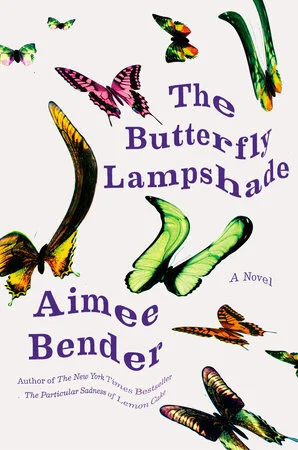Every year, it’s the same: come November, the plastic pumpkins and the fake bats go back up to the attic, and the plastic garlands and fake mistletoe come out. We start referring to post-dead people as angels instead of ghosts. We stop fearing that a strange man will sneak into the house late at night and instead leave cookies out to entice and reward him.
Yet despite the seasonal shift in décor, semantics, and views on light B&E, Christmas can be just as spooky as Halloween. According to Celtic mythology, the Winter Solstice and the weeks surrounding it are all about death and rebirth, stirring up wandering faeries, spirits, and souls. In Victorian England, gathering around a fire at Christmas was a common excuse to start swapping scary stories, often with some kind of moral embedded.
From The Financial News, “A Christmas Carol and the secrets of money, debt and success” published on 12/14/2017.
Of course the most famous example of the Christmas ghost story tradition is probably Dickens’ A Christmas Carol, which features four ghosts if you remember to count Jacob Marley. (A thing I think about sometimes is that, in the Mickey Mouse version of A Christmas Carol, the ghost of Marley—a bitter, greedy miser damned to wander the afterlife carrying heavy chains representing his many sins—is played by Goofy.) But there are many less-famous, still-great examples from the Victorian era and beyond, and I was happy to find another one while recently reading Ghost Stories by Muriel Spark.
The collection of eight of Spark’s spookiest stories, pulled together by New Directions, includes “The Seraph and the Zambesi,” which won The Observer’s Christmas story contest in 1951, beating out 7,000 other entrants and impressing Graham Greene so much that he gave Spark enough money to start writing full time. On its surface, the story is a simple religious parable—Spark would convert to Catholicism three years later, and her beliefs were reflected in much of her writing—but it’s also about a haunted and stunted man, a cautionary tale about confusing getting older with maturity. Even better, it’s completely funny.
The week before Christmas, the story’s narrator is turned away from a full hotel near Zimbabwe’s Victoria Falls (shades of Mary and Joseph) and sent to board with a gas station owner who keeps a few spare rooms for travelers. The owner turns out to be Samuel Cramer, the main character of Charles Baudelaire’s semi-autobiographical novella La Fanfarlo. While that novella is set in early 19th-century Paris, exploring Cramer’s years as a wine-soaked, pleasure-seeking layabout/writer, Spark’s story is set in Africa in 1946, with Cramer somehow being only middle-aged—a fact that we are just meant to roll with. “He was the same man but modified,” the narrator tells us. “For instance, in those days, more than a hundred years ago, Cramer had persisted for several decades, and without affectation, in being about twenty-five years old. But when I knew him, he was clearly undergoing his forty-two-year-old phase.”
La Fanfarlo herself is there too, though she is no longer Cramer’s sexy dancer mistress but a woman in her 50s with a face “puckered by malaria.” (She goes by Fanny now, and she’s married to a man named Manuela—who goes, of course, by Manny.) There is lots of bickering about a Christmas nativity pageant that will take place in the station’s garage. Cramer has written a special speech for it, despite having given up—gladly, he says—on the literary ambitions of his youth. "The greatest literature is the occasional kind, a mere afterthought,” he tells the narrator. “Life is the important thing.”
But the night of the show, as Cramer is rehearsing and the crowd is gathering, an actual seraph appears. Cramer berates the angel and threatens to call the police. He refuses to let the angel give a speech in his place, insisting that it’s his show. “I can’t conceive of an abnormality like you being a true Seraph,” says Cramer—a 100-year-old middle-aged man from an alternate story reality.
Police and audience members toss buckets of gasoline into the garage to get rid of the angel, but this only causes a fire, set off by the seraph’s heat. They then douse the fire with buckets of water. Asked if he’s insured, Cramer says “Oh yes, my policy covers everything except Acts of God—that means lightning or flood.” Hearing this, someone proclaims, “He’s fully covered.” Ba-dum-bum!
It’s an angel encounter in stark contrast to the Bible’s account of the one that took place at Christ’s actual birth: “And, lo, the angel of the Lord came upon them, and the glory of the Lord shone round about them: and they were sore afraid.” But while the seraph is featured in the title, I think the real supernatural star of the story is Cramer, a ghost of the dandy he used to be, trying to cling to whatever’s left of the spotlight he claims to have renounced.
Cramer’s angel costume is telling—mosquito netting you can see through and makeup he can’t stop from melting off his face. The seraph, by contrast, appears to have “a completed look. No part was undergoing a process; the outline lacked the signs of confusion and ferment which commonly indicate living things, and this was also the principle of its beauty.” Cramer even calls his speech a “masque,” which can mean a short allegorical drama but, of course, more commonly, just means a mask.
Leaving the ruins of the gas station, the audience members walk home actually singing hymns, while Cramer and others hop in a car and give chase to the angel. The seraph gets away, flying down the Zambesi river, dodging “the rocks that looked like crocodiles, and the crocodiles that looked like rocks.”
Of course it’s a story about religion and belief, but more than that, I think Spark is talking about the possibility of growing older without really growing. We might leave behind the reckless choices of our youth only to exchange them for the dug-in self-righteousness of middle age. We might declare dreams dead. We might confuse miracles for threats. And worse, we won’t even realize what we’re doing. We might even call it wisdom.
Whether it’s Christmas or Halloween, the Victorian era or a year full of shifting health guidance, polarized political parties, and issues that seem black, white, and blurry at the same time, it’s a frightening concept. Haunting, Spark seems to know, is the gift that keeps on giving.
READ SIMILAR STORIES












Cadwell Turnbull's new novel — the first in a trilogy — imagines the hard, uncertain work of a fantastical justice.